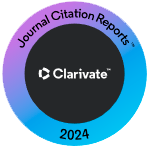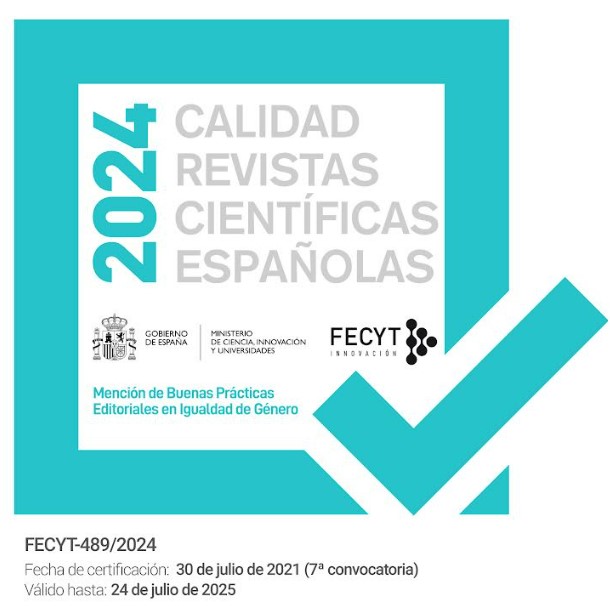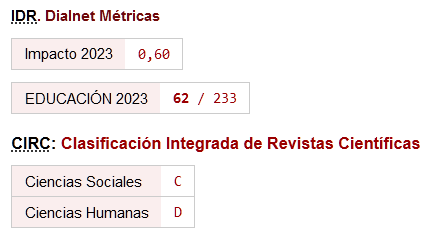Enriching the statistics learning experience with D3.js interactive animations: Insurance applications of Markov chains
Keywords:
Animación interactiva, simulación, seguros, formación actuarial, Interactive animation, simulation, insurance, actuarial educationAbstract
The aim of this paper is to explore the possibilities that online interactive animations offer to enhance the statistics learning experience in the field of actuarial education. A particular type of animation, based on the D3.js JavaScript library, has been chosen due to its powerful visualisation components and natural treatment of transitions. The latter is especially adequate for the graphical visualisation of Markov chains. Some insurance applications of discrete time Markov chains are simulated using this visual framework and used in a course of Stochastic Processes of the MSc in Actuarial Science at the University of Málaga. Finally, the results of the experience along with the outcomes of a survey conducted at the end of the course are analysed, revealing the main strengths of this approach perceived by the students.
------------------------------------------------------------------
El objetivo de este artículo consiste en la exploración de las posibilidades que las animaciones interactivas pueden ofrecer para enriquecer la experiencia de aprendizaje de Estadística en el ámbito de la educación actuarial. Un tipo particular de animación, basado en la librería Javascript D3.js, ha sido seleccionado para ello por sus potentes componentes de visualización, así como por su tratamiento natural de las transiciones. Esta segunda característica es de vital importancia para la visualización gráfica de las cadenas de Markov. Algunas aplicaciones de las cadenas de Markov en el campo de los seguros se simulan usando este entorno y se han aplicado en el curso de procesos estocásticos del Máster en Ciencias Actuariales y Financieras de la Universidad de Málaga. Finalmente, se analizan los resultados de la experiencia, incluyendo los de una encuesta realizada al final del curso, que revelan las principales fortalezas del enfoque adoptado, tal como han sido percibidos por los estudiantes.
Downloads
References
• Byrne, J., Heavey, C., Byrne, P.J. (2010). A review of web-based simulation and supporting tools. Simulation Modelling Practice and Theory, 18(3), 253–276. http://dx.doi.org/10.1016/j.simpat.2009.09.013
• Chance, B., Ben-Zvi, D., Garfield, J., Medina, E. (2007). The role of technology in improving student learning of statistics. Technology Innovations in Statistics Education, 1(1), 1–25.
• Churchill, D. (2007). Towards a useful classification of learning objects. Educational Technology Research Development, 55, 479-497. http://dx.doi.org/10.1007/s11423-006-9000-y
• Dinov, I.D., Christou, N., Sanchez, J. (2008). Central Limit Theorem. New SOCR Applet and Demonstration Activity. Journal of Statistics Education, 16 (2), 1-15.
• Dinov, I.D., Kamino, S., Bhakhrani, B., Christou, N. (2013). Technology-enhanced Interactive Teaching of Marginal, Joint and Conditional Probabilities. Teaching Statistics, 35 (3), 131–139. http://dx.doi.org/10.1111/test.12012
• Dinov, I.D., Sanchez, J., Christou, N. (2008). Pedagogical utilization and assessment of the statistic online computational resource in introductory probability and statistics courses. Computers and Education, 50, 284–300. http://dx.doi.org/ 10.1016/j.compedu.2006.06.003
• Fernández-Morales, A. (2008). Educational applications of HuMoS: An interactive on-line simulator of human mortality. International Conference of Education, Research and Innovation (ICERI 2008). International Association of Technology, Education and Development (IATED), Madrid.
• Fernández-Morales, A. (2010). Technological resources and non-presential activities for an improvement in the learning process of the subject 'Actuarial Statistics'”. @Tic Revista d'Innovació Educativa, 5, 46–56. http://dx.doi.org/10.7203/attic.5.283
• Fernández-Morales, A. (2011). Learning survival models with on-line simulation activities in the Actuarial Science degree. International Journal of Emerging Technologies in Learning, 6(1), 15–19. http://dx.doi.org/10.3991/ijet.v6i1.1398
• Fernández-Morales, A. (2014). Simulating seasonal concentration in tourism series. Journal of Hospitality, Leisure, Sport & Tourism Education, 15, 116–123. http://dx.doi.org/10.1016/j.jhlste.2014.08.001
• Fernández-Morales, A. (2015). Application of a Discrete-time Markov Chain Simulation in Insurance. International Journal of Recent Contributions from Engineering, Science & IT, 3(3), 27-32. http://dx.doi.org/10.3991/ijes.v3i3.4929
• Fernández-Morales, A. & Mayorga-Toledano, M.C. (2010). Using iPhone web apps to enhance teaching and learning in actuarial education. In: Retta Guy, (ed.) Mobile Learning: Pilot Projects and Initiatives. Informing Science Press, Santa Rosa, California, United States, 83-105.
• Fernández-Morales, A. & Mayorga-Toledano, M.C. (2013). Developing creativity and innovation through collaborative projects, Interdisciplinary Studies Journal 2(3), 80-82.
• Fernández-Morales, A. & Trigo-Martínez (2015). Developing professional competences with insurance multidisciplinary projects. In L. Gómez Chova, A. López Martínez & I. Candel Torres (eds.) 8th International Conference of Education, Research and Innovation, ICERI 2015 Proceedings, pp. 2104-2109. Sevilla: IATED.
• Garrison, D. R. & Kanuka, H. (2004). Blended learning: Uncovering its transformative potential in higher education. Internet and Higher Education, 7, 95-105. http://dx.doi.org/10.1016/j.iheduc.2004.02.001
• González, J.A., Jover, L., Cobo, E., Muñoz, P. (2010). A web-based learning tool improves student performance in statistics: A randomized masked trial. Computers and Education, 55(2), 704–713. http://dx.doi.org/10.1016/j.compedu.2010.03.003
• Lin, Y.C., Liu, T.C. & Sweller, J. (2015). Improving the frame design of computer simulations for learning: Determining the primacy of the isolated elements or the transient information effects. Computers and Education, 88, 280-291. http://dx.doi.org/10.1016/j.compedu.2015.06.001
• Liu, T. C. (2010). Developing simulation-based computer assisted learning to correct students' statistical misconceptions based on cognitive conflict theory, using “correlation” as an example. Educational Technology & Society, 13, 180-192.
• Lunsford, M., Holmes-Rowell, G., Goodson-Espy, T. (2006). Classroom Research: Assessment of Student Understanding of Sampling Distributions of Means and the Central Limit Theorem in Post-Calculus Probability and Statistics Classes. Journal of Statistics Education, 14.
• Mayorga-Toledano, M. C. (2010). Integrating e-learning activities in the teaching and learning of Banking and Securities Market Law. Education and Law Review, 1, 177-196.
• Mayorga-Toledano, M.C. & Fernández-Morales, A. (2003). Learning tools for Java-enabled phones: An application for Actuarial Studies. In: Attewell, J. & Savill-Smith, C.(eds.): Learning with mobile devices. Learning and Skills Development Agency, London, United Kingdom, 2004, 95-99.
• Mayorga-Toledano, M.C., Fernández-Morales, A. (2009). Design and Assessment of E-learning and M-learning Tools for the Degree in Actuarial Sciences. In R. Guy, (Ed.) The Evolution of Mobile Teaching and Learning. Santa Rosa, California: Informing Science Press, 159-176.
• Mayorga-Toledano, M.C. & Fernández-Morales, A. (2011). Delimitación prospectiva de funciones y responsabilidades actuariales. III Congreso Ibérico de Actuarios, Instituto de Actuarios Españoles, Madrid.
• Mayorga-Toledano, M.C., Fernández-Morales, A., Molina-Ruiz, S., Mora-Lima, P. (2009). Desarrollo y evaluación de actividades no presenciales mediante un sistema adaptativo. In: González-García, F.J. (Ed.) Una aplicación en la titulación de Ciencias Actuariales y Financieras. Innovación Educativa y Espacio Europeo de Educación Superior. Primer Premio a la Innovación Educativa en la Universidad de Málaga Ed. Servicio de Publicaciones de la Universidad de Málaga, Málaga, Spain, 17-52.
• Monahan, T., McArdle, G., Bertolotto, M. (2007). mCLEV-R. Design and Evaluation of an Interactive and Collaborative M-Learning Application. International Journal of Emerging Technologies in Learning, 2(7).
• Motiwalla, L.F. (2005). Mobile learning: A framework and evaluation. Computers and Education, 49 (3), 581-596. http://dx.doi.org/10.1016/j.compedu.2005.10.011
• Naismith, L. & Corlett, D. (2006). Reflections on success: A retrospective of the mLearn conference series 2002-2005. Proceedings of mLearn 2006 Conference, Banf, Canada, Athabasca University.
• Novak, E. (2014). Effects of simulation-based learning on students’ statistical factual, conceptual and application knowledge. Journal of Computer Assisted Learning, 30, 148–158. http://dx.doi.org/10.1111/jcal.12027
• Powell, V. & Lehe, L. (2015). Markov Chains. A visual explanation. http://setosa.io/blog/2014/07/26/markov-chains, accessed 11 June 2015.
• Schneiter, K. (2008). Two Applets for Teaching Hypothesis Testing. Journal of Statistics Education, 16(3).
• Sosa, G.W., Berger, D.E., Saw, A.T., Mary, J. C. (2011). Effectiveness of computer-assisted instruction in statistics: A meta-analysis. Review of Educational Research, 81(1), 97–127. http://dx.doi.org/10.3102/0034654310378174
• Symanzik, J., Vukasinovik, N, (2006). Teaching an Introductory Statistics Course with CyberStats, an Electronic Textbook. Journal of Statistics Education, 14(1).
• Tishkovskaya, S., & Lancaster, G. A. (2012). Statistical Education in the 21st Century: a Review of Challenges, Teaching Innovations and Strategies for Reform. Journal of Statistics Education, 20 (2), 1-56.
• Virvou, M. & Alepis, E. (2005). Mobile educational features in authoring tools for personalized tutoring. Computers and Education, 44, 53-68. http://dx.doi.org/10.1016/j.compedu.2003.12.020
• Wang, P., Vaughn, B.K., Liu, M. (2011). The impact of animation interactivity on novices' learning of introductory statistics. Computers and Education, 56(1), 300–311. http://dx.doi.org/10.1016/j.compedu.2010.07.011
• West, R.W., & Ogden, R.T. (1998). Interactive Demonstrations for Statistics Education on the World Wide Web. Journal of Statistics Education, 6(3).












